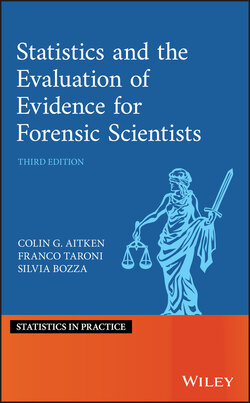Читать книгу Statistics and the Evaluation of Evidence for Forensic Scientists - Franco Taroni - Страница 46
Notes
Оглавление1 1 In earlier editions the term suspect was used in this context. It is now felt that the term person of interest is a more accurate description of the status of the person. The term suspect will still be used if use of ‘person of interest’ would be clumsy. The term defendant will only be used if the context is clearly that of a court.
2 2 There is a recent critical discussion on the use of tests of significance. See, for example, Wasserstein et al. (2019), Amrhein et al. (2019), Ioannidis (2019), Haaf et al. (2019), and Johnson (2019). Note that such a discussion dates back to 1986 (Kaye 1986a) with a later update (Kaye 2017c).
3 3 The use of the word trial here is a statistical one and is not to be confused with the legal use. In a statistical use, a trial is a particular event, such as the toss of a coin. More details are in the Appendix A.2.2.
4 4 The term correspond is used here rather than the more commonly used match. The term ‘match’ suggests certainty or identity which is not always the case with trace evidence. Use of the term ‘correspond’ emphasises this and is a reminder to be careful with interpretation. See Section 2.5.11 and Friedman (1996) for further comment.
5 5 The 2015 Guidelines for evaluative reporting can be found at http://enfsi.eu/wp-content/uploads/2016/09/m1_guideline.pdf.
6 6 Note the use of the capitalised words ‘You’ and ‘Your’ in this quotation. This is a rhetorical device to help readers keep in mind that probabilities are their own degrees of belief based on the information they have at the time they make the judgement.
7 7 Part of this sentence is also reported by Kadane and Schum (1996, p. 160).
8 8 English version of the paper reprinted in Monari and Cocchi (1993).
9 9 Note that the use of the term ‘sample’ in this context is one of a purely technical nature in statistics and has nothing to do with the widespread but inappropriate use of the same term for designating physical trace material recovered or collected in a forensic science context. In particular, the seizure (e.g. at crime scenes) and analysis of trace material has to deal with the material as it is, irrespective of its condition; there is no such thing as randomisation, for example.
